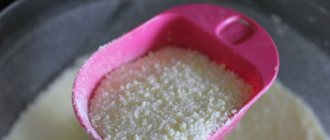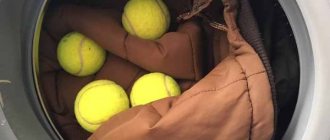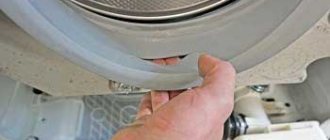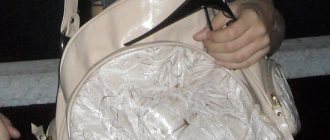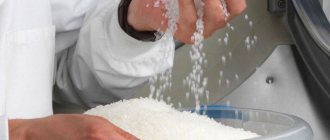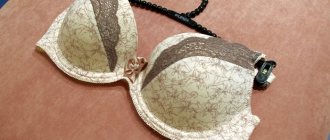Sometimes the lack of washing powder is discovered right before washing, and there is no way to run to the store for it. What to do? There are many replacement options, and some of them do even better in washing. Any washing powder is not harmless, so in some cases it is deliberately replaced with less aggressive agents. The most popular alternatives are listed below.
DIY washing powder recipes
There are dozens of methods for making detergent composition at home.
The simplest ones are passed down from generation to generation and are constantly used as an alternative to store-bought goods. Some instructions include aromatic esters, while others focus on whitening and brightening results. What all methods have in common is low price, safety, and efficiency.
| Name | Description |
| Classical |
|
| A simplified version of the classic recipe |
|
| For baby clothes |
|
| For colored clothes |
|
| For white fabrics |
The ingredients have the same proportion |
| For stubborn stains |
|
The procedure for making the mixture will always be the same:
- Take a suitable container. The soap is grated on a fine grater.
- The necessary ingredients are added one by one to the bowl. Soda is first added to the bowl with soap crumbs, then borax and salt. Oily esters are added at the very end.
- The entire list of elements is well mixed. The finished mass is placed in an airtight form.
The list of ingredients required to prepare the liquid cleaner includes:
- water – 1.5 liters;
- soap - half a piece;
- soda ash – 200 g;
- borax – 100 g;
- essential oil – 12-14 drops.
Instructions for preparing the gel:
- The soap is rubbed into very fine shavings and placed in a pan of hot water.
- The container is heated over medium heat. The composition simmers until it becomes homogeneous.
- Soda and borax (pre-soaked) are added to the mixture. The resulting consistency mixes well. If necessary, add liquid.
- After complete cooling, aromatic oils are added to the mass.
- The finished product is poured into a mold, covered with a lid and left in a cool place for 8-10 hours.
The composition intended for washing a child’s clothes has a more gentle structure.
Instead of 72% laundry soap, hypoallergenic baby soap is used. Borax is excluded from the consistency. Soda ash can be replaced with baking soda.
The step-by-step production is the same as in the previous recipe for regular gel. To prevent colds and fungal infections in babies, tea tree, eucalyptus or mint oils are added to the washing structure.
To make a more concentrated paste-like mass, simple ingredients are needed: distilled or running water, soap, borax, soda.
The procedure for making the mixture is as follows:
- The soap is rubbed and placed in a cooking container, filled with cold water.
- The pan is placed on the fire and heated until the soap shavings are completely dissolved.
- The composition contains soda and borax. All ingredients are mixed and simmered until the resulting consistency increases several times.
- The mass is covered and left to cool.
If the mixture is too thick, you can add a little boiling water, stir and refrigerate for 24 hours.
The tasks of any air conditioner include:
- make clothes softer and more pleasant;
- rid the fabric of the “electrification” effect;
- facilitate easy ironing.
Regular vinegar essence can easily cope with these functions. Making a homemade softener is quite simple. Dissolve 1.5 tablespoons of 9% vinegar in 500 ml of warm water, then gradually add the same amount of baking soda.
How to wash dishes in the dishwasher - homemade substitutes
If you don’t have chemicals at hand or you fundamentally don’t want to use them, turn to natural products. You can wash the dishwasher:
- Mustard. There is a lot of controversy regarding it. It is believed that mustard powder clogs the holes in the rocker arm. Opponents are confident that mustard is an excellent cleaner that allows you to reduce the frequency of disassembling and cleaning the device. Both opinions are correct. The point is the difference in the design and degree of grinding of the mustard seeds. If they are hand-ground, you may end up with too large fractions. If the grinding is good, then mustard will be the best natural remedy for cleaning dirty surfaces. It is cheap and environmentally friendly. Before loading the dishes into the compartment, they are slightly moistened and then covered with mustard.
- Baking soda. Removes grease, burnt marks and heavy dirt well. It is poured into the compartment, having first been mixed with borax in a 1:1 ratio.
- Laundry soap. A mixture is prepared from grated shavings - 25 g mixed with 0.5 liters of hot water, 4 tbsp. l. glycerin and 1 tbsp. l. alcohol/vodka. Absolutely harmless to health.
- Apple vinegar. It is not as aggressive as normal. Does not destroy rubber and aluminum parts. 50-60 ml of vinegar is poured into the compartment for bulk compounds.
You can also use ash, salt, crushed charcoal - they are especially good at cleaning glassware until it shines.
Simple recipe
If you are dealing with stubborn dirt, you can try making laundry detergent for washing lightly soiled clothes in an automatic washing machine. You need to take 200 g of borax and 200 g of baking soda, mix these powders and pour into a dry, hermetically sealed container. As soon as the time comes to wash, using a measuring container you will need to collect about 30 g of powder per 2 kg of laundry, pour this powder into a glass, then fill the glass to the brim with hot water and stir the contents with a spoon.
After this, the simplest washing solution can be poured into the powder cuvette and run your favorite washing program. When using this powder, it is better not to wash things in cold water, but there is no need for boiling water! The optimal temperature is 40-60 C.
Multi-ingredient recipe
The following recipe for homemade powder seems to be a little more effective, but certainly absolutely safe for things and the washing machine. It cannot be considered a complete replacement for store-bought powder, but in some cases it copes with its task very well. We take the following ingredients:
- 200 g baking soda;
- 200 g borax;
- 200 g table salt;
- 100 ml wine vinegar.
All of the above components can be mixed except wine vinegar. We pour the vinegar into a separate container and place it next to the jar into which we previously poured a mixture of baking soda, borax and table salt. This is how we will use the product.
- Using a measuring container, measure 40 g of powder and 2 teaspoons of vinegar for every 2 kg of laundry.
- Pour the powder into the main wash compartment.
- Pour vinegar into the rinse aid compartment.
- We put not too dirty colored items into the drum and start the wash.
Is it possible to wash snow-white items or highly faded colored items with this powder? Practice shows that this is not necessary. We carried out the appropriate tests and in one wash out of three, we ruined the white item. The quality of washing colored items with homemade powder also does not reach the level of factory powder, but sometimes it is still quite possible to wash with this product. It is “to wash it sometimes”, and not to replace the usual powder with a homemade one.
How to make home remedies more effective?
Experienced housewives, not without reason, claim that if you wash correctly, you won’t need any expensive washing powders. Their advice is very simple, but at the same time, many have forgotten about them, having become accustomed to the convenience that automatic washing machines create.
- Before putting things into the washing machine drum, soak them in a bowl of water for 10-15 minutes. First dissolve a little homemade powder in water. During this short time, the powder will pick up contaminants. Then you can wring out the items, put them in the washing machine and start the washing program.
- Before washing, you can categorize your clothes not only by fabric type and color, but also by type of dirt. For example, soak things stained with blood in cold water, and treat things with red wine stains with ammonia mixed with hydrogen peroxide. After this, the stains can be easily washed off even with the use of homemade powder.
- Before washing, evaluate the nature of the contamination of a particular item. If the item is very dirty, put it aside and wash it, then separately with expensive powder.
In conclusion, we note that no home remedy can completely replace regular washing machine powder. However, by alternating regular powder with homemade powder, you can save a lot of money by washing in an automatic washing machine. All that remains is to prepare such a powder yourself. Good luck!
Natural substitutes for household chemicals
Enterprising housewives found a solution to the problem and adapted old, time-tested home remedies for use in automatic machines.
Soda Ash
Capable of removing even the most complex stains. At the same time, it is not very gentle on fibers. Therefore, she should only wash coarse cotton and linen fabrics.
An alkaline environment has a negative effect on the sealing elements of household appliances. Using baking soda regularly is not recommended.
Salt
Suitable for cleaning linen and calico fibers. It copes with common daily pollution. For difficult stains, it is better to use more powerful formulations. The main advantage of salt is its careful handling of dyes. They retain brightness and color saturation.
horse chestnut
Suitable for washing machine and hand washing. The nuts are dried, peeled and ground into powder. As you use it, it foams and removes stains.
And a little about prevention
- Use only as much powder, bleach and conditioner as you actually need (see product manufacturer's instructions). After all, excess detergents do not enhance the result, but simply settle and accumulate inside the washing machine.
- Always remove small items from pockets to prevent them from clogging the drain filter.
- Try not to delay starting the machine if you have already thrown dirty things into the drum. Well, take out clean clothes immediately after washing and send them to dry.
- Try to always keep the car open to prevent mold from growing in it due to high humidity.
What products should not be used in an automatic washing machine?
Using an automatic washing machine at home is a significant help. But its operation requires special attention. Many items or items with certain parts cannot be washed. But no less dangerous are the products used to clean clothes.
Negatively affects machine parts:
- Too much washing powder or gel. This contributes to the settling of particles and the formation of plaque on the machine parts, the appearance of a musty smell, as well as the formation of excess foam, which is difficult to rinse out of the laundry fibers.
- Inappropriate product class. That is, the use of hand washing powder, hair shampoo, technical liquids such as “Mole”. In machine mode, you should only use substances marked “for automatic washing machines.”
- Bleach or bleach. Such substances worsen the condition of the drum rubber, drain hose, and drum.
If the washing machine powder runs out, it can be replaced with other household or similar components. But in order for the washer to last longer, you must read the manufacturer’s instructions (which talk about the volume and types of detergents) and not use products that will damage its performance.
Housewives who are concerned about the health of their family may wonder what can replace washing powder when washing in order to effectively remove dust and dirt, and at the same time preserve the unit. You can replace the powder from the store with homemade, environmentally friendly one, knowing the characteristics of the components of folk remedies and the proportions.
What components can replace purchased powders?
It is clear that the environmental friendliness of a detergent is extremely important, but its main function is to make our clothes clean and smell nice. What can replace chemical powders?
- The simplest soap. If you ask your grandmothers what they used to wash dirty laundry with, they will tell you that they mostly used ordinary laundry soap. Laundry soap containing 72% alkali will not only cope well with various types of stains, but will also disinfect laundry well, as it has antibacterial properties. In addition, it is made from natural ingredients.
- Borax or sodium tetraborate is a mineral substance. This powder can be bought at any pharmacy at a cheap price. Borax not only does a great job of washing, but also perfectly disinfects laundry. Therefore, it is indispensable in the manufacture of homemade powders, that is, at home, especially for washing children's clothes.
- Soda. Suitable for both food and calcined. This is a good bleaching agent, which also removes unpleasant odors from clothes and also softens the water, which makes washing better.
- Vinegar and citric acid perform the same water softening properties. Due to the fact that acids kill bacteria and fungi, their use is indispensable in eliminating unpleasant odors, including the damp smell of mold.
- Additional components include any natural essential oils that replace the role of flavorings. Hydrogen peroxide is a powerful bleach, which contains mainly atomic oxygen and is a strong disinfectant and also safe for health. Dry mustard powder is a good disinfectant and washes things well. However, it is only suitable for hand washing. Salt can enhance the cleaning effects of the main components; when soaking laundry in salt, it makes it stronger, kills micro-pathogenic environments and eliminates bad odors.
Tip: Before you start making your homemade laundry detergent, decide which ingredients are most suitable for you. For example, feel free to use bleaching agents to whiten laundry, and vice versa; you should not use peroxide to wash colored items. Vinegar, on the contrary, has a very good effect on preserving the color of fabric.
How to replace surfactants?
The main function of the detergent composition is to remove contaminants, but harmlessness is also important.
Eco-friendly substances suitable for washing are available in almost every home. The main element of a homemade solution is soap.
The important ingredients are baking soda and acetic acid. Other inexpensive substances can be purchased in the hardware section of the supermarket or pharmacy. These include borax and soda ash.
Natural structures do not have allergens or synthetic impurities. The self-prepared concentrate does not remain on fabric particles, but is easily washed off when rinsing.
To make your own cleaning mixes you will need bowls, a grater and large glass containers.
Why are industrial powders dangerous?
To understand the harm that industrial synthetic laundry detergents can cause, just read their composition on the packaging. What do we most often find there?
- Substances marked A are surfactants, and more specifically, anionic surfactants. With their help, various types of dirt, as well as grease, are eliminated during washing and soaking clothes. They form soap suds well. Their disadvantage is that A-surfactant molecules are not completely rinsed out of fabric fibers. They easily penetrate the body upon contact with washed clothes, which causes skin irritation, allergies and other undesirable processes. In addition, they can accumulate over time in body tissues and internal organs, which slows down metabolism, affects the decrease in immunity, and the worst thing is that it is impossible to remove them completely from the body.
- Although sodium sulfates are considered relatively safe for humans, they can enhance the negative effects of surfactants. They are mainly used as a filler, that is, to add volume to the powder and, accordingly, reduce the cost of the detergent.
- Substances such as enzymes can break down even stubborn stains, but with frequent washing they significantly damage the fabric, destroying the structure of the fibers. As a rule, things subsequently quickly wear out, become covered with pellets and even tear.
- Bleaching agents impart optical whiteness to linen. Their role is to settle on the surface structure of the tissue and reflect light. As a result, they not only penetrate the human body through the skin, but also accumulate in it, which leads to its slow poisoning.
- Fragrances (fragrances) make washed items smell pleasant. Side effects - can cause headaches, allergies, and provoke asthmatic symptoms.
- Phthalates are substances that retain fragrance in fabric fibers. Capable of penetrating into the blood, through the skin and respiratory system. They have a tendency to accumulate in the body, which, according to recent research by scientists, can lead to impotence and infertility.
- Phosphates are the most dangerous substances. They are added to water softening powders, which improves the quality of washing. Moreover, it is impossible to completely get rid of them even with the most thorough and prolonged rinsing regimen. Penetrating into the body, they poison it over time, as they are toxic to the liver, kidneys and other organs. Phosphates have a bad effect on metabolic processes, lead to exacerbation of chronic diseases and can even change the composition of the blood.
IMPORTANT! All of the above data indicate that industrially produced powders are extremely dangerous to human health, and even more so for children.
The most harmful elements of factory powders
Phosphates are a particular danger in industrial mixtures. Microparticles that form the basis of industrial detergent products are quite toxic and can have a destructive effect on the human body.
Phosphates are particularly dangerous in industrial mixtures. When they get on the fabric during washing, they are not washed out completely even after several rinses.
The composition of the factory consistencies includes:
- aggressive surfactants;
- sulfates;
- chlorine;
- peroxide;
- sodium silicate;
- enzymes and other chemical compounds.
Constant human contact with toxic elements causes skin irritation, itching, allergic reactions, affects the functioning of the respiratory and urinary systems, and reduces immunity.
Do-it-yourself washing powder for an automatic washing machine is the best alternative to store-bought detergent.
Homemade laundry products
- Laundry soap is suitable for washing natural materials and baby clothes. Choose a bar of the first category with 72% fat content. It effectively removes stains and dirt, whitens laundry and softens fabric fibers. For an effective result, mix 20 ml of grated soap shavings with a teaspoon of soda, but do not use soda for black and faded laundry. It leaves white marks and stains on clothes and can also lead to color loss;
- Baking soda is suitable for washing cotton and linen items. It effectively washes thick and coarse fabrics, but is not suitable for wool or silk. Otherwise, the materials will become hard and wear out in a short time. Wash cotton and linen at 60-90 degrees;
- Ash is suitable for washing and bleaching clothes. Use a product only of plant origin, preferably deciduous trees, such as birch or aspen. To wash white clothes, pour the ash into a gauze cloth, wrap and tie the bag, which you place in a container with water and dirty clothes. Place the container on the stove and boil. Cool the solution, wash and rinse in clean water. Universal ash is suitable for bleaching synthetics, natural cotton and linen;
- Hydrogen peroxide and ammonia will also replace chemical bleaching agents. For ten liters of water, dilute two tablespoons of peroxide and a tablespoon of ammonia. Mix and place things into the prepared solution. Leave for several hours and rinse. As a result, the clothes will return freshness and whiteness;
- For bleaching, you can use a solution of potassium permanganate and a soap solution made from shavings of laundry or antibacterial soap. Combine both mixtures and add two or three white items that need to be bleached. Leave it overnight and then rinse. As a result, you will get snow-white fabric without stains or dirt;
- Dry mustard is a suitable solution for wool and silk, for children's clothes. It preserves the freshness and softness of such things, acts gently and neatly, is easily washed out of the fabric and does not cause negative reactions. But not suitable for cotton products. For machine washing, use 50 grams of mustard powder and a temperature of up to forty degrees. For heavy stains and dirt, first apply a mixture of water and mustard. Leave for ten minutes and wash. Using the manual method, add twenty grams of dry mustard per liter of water and leave for two hours. Drain the liquid and mix the sediment with hot water;
- Soap root is also suitable for wool and silk. In addition, it is optimal for washing large amounts of laundry. For water treatments, pour 50 grams of crushed powder into two glasses of boiling water and leave for a day. Place the resulting mixture on low heat and leave for an hour. Then cool and strain. After water procedures, rinse the laundry in warm water. For wool, you can add two teaspoons of ammonia to make the fabric soft and pleasant to the touch;
- Beans are an unexpected but very effective product when washing woolen items. Pour two hundred grams of grains with a liter of water and cook. Use ready-made beans for cooking. The broth needs to be cooled and strained, poured into a container with hot water and whisked until foam forms. Wash your clothes and then rinse them in cold water. To soften things during the final rinse, add a tablespoon of vinegar per liter of water;
- Table salt effectively washes linen and chintz, while maintaining the color and brightness of items even after repeated washing, and has a gentle and delicate effect. The product is used to remove small stains and light dirt. The cleaning solution is prepared using a tablespoon of salt per liter of water. Stir the salt until it dissolves immediately. Leave the composition for an hour, and then soak the items for an hour as well. Then lightly wash the items and rinse in clean water.
If you are a supporter of using gels and liquid detergents, take a bar of laundry, antibacterial or tar soap. Grate the piece, then pour ten liters of water into the soap shavings and let it cook until a homogeneous mixture is formed. Add another ten liters of water, add a glass of soda and half a glass of borax.
Liquid washing gels
Washing powders can be replaced with liquid gels. By the way, such products are specially made for safe washing in an automatic machine. The gel is a liquid-like composition without phosphates and with a minimal amount of surfactants.
The gels are distinguished by a convenient dosage, since the product is measured using a cap from the packaging. In addition, the product is convenient to store in a compact container that does not take up much space.
The gel also differs in that it contains titanium dioxide and similar substances that help maintain the whiteness and freshness of products. Such elements are not washed out after washing and protect the fibers of the materials, preventing further contamination.
Liquid detergents act delicately on fabrics, are completely washed out and leave no traces, and retain the shape and original appearance of products. They are optimal for young children, people with allergic diseases and weak immunity.
Please note that gels cannot be used for hand washing because the substances in the product require special activation, which is only possible in an automatic machine.
In addition, it is recommended to dilute gels with warm water at a temperature no higher than 40 degrees, since in hot water the elements from the composition are destroyed and stop working. When washed in water temperatures above 60 degrees, the gels will not be able to remove stubborn stains from grass and cosmetics, food and drinks.
Laundry soap
The advantages of using laundry soap for washing are the following effects:
- disinfectant;
- whitening;
- removing stains of organic origin.
The product does not damage the fabric. After using it, the laundry becomes clean and pleasant to the touch. However, when washing colored items, it can cause them to lose their brightness. Laundry soap is not effective against stains of inorganic origin. This folk remedy is not effective enough against complex stains.
To wash things with laundry soap, you need to first grate it on a fine grater. The presence of large pieces in the total mass is unacceptable. Soap stains will remain on things. Fine soap shavings are poured with warm water and mixed thoroughly. The soap should completely dissolve. The resulting substance is poured directly into the drum of the washing machine, after loading dirty clothes into it.
Soap shavings are preferable for hand washing.
Use it in the car with caution. The product tends to stick to the internal surfaces of a household appliance, enveloping them
This threatens to render the washing machine unusable. You can prevent damage by thoroughly cleaning the interior of the equipment from soap deposits after each use of this folk remedy.
Eco-wash: beans
Bean broth is ideal for washing woolen items. All you need is the water in which the beans were cooked; the product itself can be easily eaten. For 1 liter of water you will need 200 grams of beans; you need to cook them in a closed saucepan until tender. The broth must be filtered and added to the washing water. For woolen items, it will be useful to add ordinary table vinegar to the water when rinsing - 1 tablespoon per 1 liter of liquid.
What not to use
Many recipes using soap are not machine washable. The soap forms a lot of foam, in addition, the remaining product settles in the tank, drain, filter and drain of the machine. As a result, this disrupts the operation of the washing drum, clogs the holes and disables the equipment.
For the same reasons, the following components and solutions cannot be placed in the automatic machine:
- Solid and liquid soap, soap shavings;
- Vinegar, acids, alkali;
- Mustard powder;
- Plants in crushed form with large fractions.
Even with timely cleaning of the washing machine, the risk of equipment breakdown when using the above components remains very high. But such products are well suited for hand washing.
Use acids and alkalis with caution. They will remove old dirt and stubborn stains, but are not suitable for washing children's clothes.
Acids and alkalis can cause severe skin irritation. It is advisable to wear rubber gloves when working with such components. But vinegar can be added with each rinse to make things soft. You can soften water using special filters and traditional methods. How to do this, read the article on how to purify tap water.
